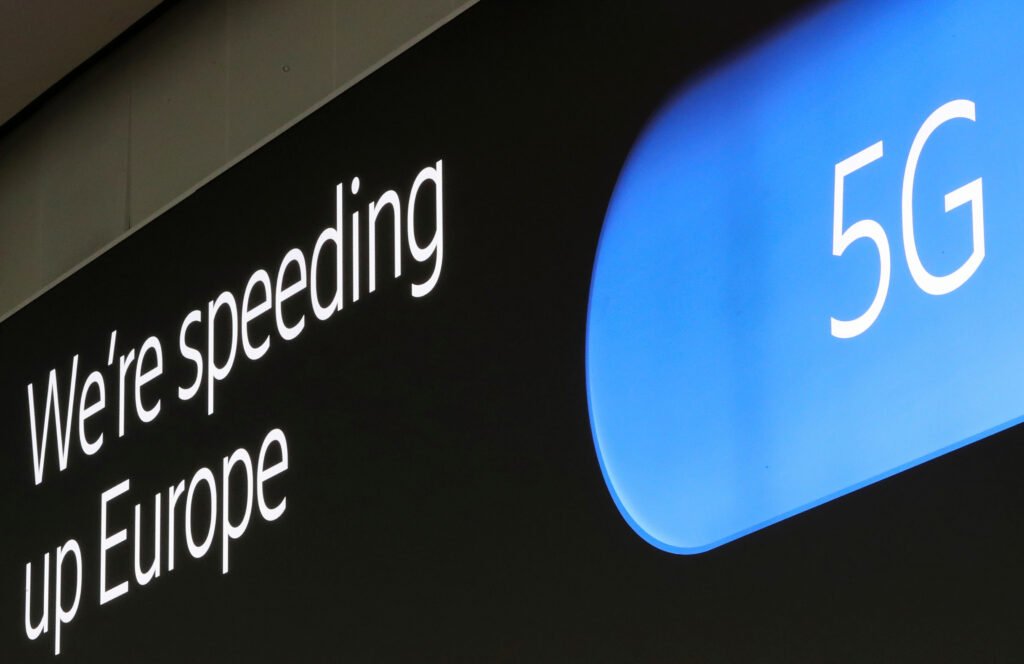The Global Race for 5G: Who Is Leading the Way in Next-Generation Mobile Networks?
Explore the latest developments and global leaders in the race to implement next-generation 5G mobile networks.
KEY TAKEAWAYS
- The race for 5G is a global competition to develop and deploy next-generation mobile networks that promise faster speeds and greater connectivity.
- China is currently leading the way in 5G development and deployment, with significant investments in infrastructure and research.
- The United States is also investing heavily in 5G technology, but faces challenges such as regulatory hurdles and limited access to key components.
- Other countries such as South Korea, Japan, and the European Union are also making strides in 5G development but may face similar challenges to the US.
- The implementation of 5G technology has the potential to transform industries such as healthcare, transportation, and entertainment, but may also raise concerns about data privacy and security.
- Real-world scenarios for 5G include autonomous vehicles, smart cities, and remote healthcare.
In today’s world, staying connected has become a necessity. And to meet the ever-increasing demand for high-speed internet and data transmission, the world is in a race for 5G networks. These next-generation mobile networks promise lightning-fast speeds and a level of connectivity that was once considered unimaginable. The race for 5G is not just a matter of technological advancement, but also a competition for economic dominance. With billions of dollars being invested in infrastructure and research, countries are vying for the top spot in 5G development and deployment. China currently leads the way with its significant investments, while the United States is also making strides. However, challenges such as regulatory hurdles and limited access to key components may hinder progress. As the race for 5G intensifies, the potential for transformative changes in industries such as healthcare, transportation, and entertainment is enormous.
Background
5G is the fifth-generation mobile network technology, designed to be the next major evolution in wireless communications. It is expected to provide faster speeds, lower latency, and better reliability than existing cellular technologies. 5G networks are also expected to enable a whole new range of services and applications, from autonomous vehicles and augmented reality to smart cities and Industry 4.0.
What is 5G?
5G is the latest mobile network technology, designed to deliver higher speeds, lower latency, and more reliable coverage than its predecessors. It works by using a combination of new radio technologies and spectrum bands, as well as advanced antenna designs and network architectures. It is expected to offer speeds up to 10 times faster than 4G, as well as lower latency and better reliability.
Why is 5G Important?
5G is expected to enable a whole new range of services and applications, including autonomous vehicles, augmented reality, smart cities, and Industry 4.0. By providing faster speeds and lower latency, it will enable new services such as remote surgery and telemedicine, as well as new forms of entertainment and communications. Additionally, 5G networks are expected to be more energy-efficient than existing cellular networks, making them more environmentally friendly.
Why is the Global Race for 5G So Important?
The global race for 5G is a critical component of the digital transformation that is taking place around the world. Countries that can deploy 5G networks first will gain a competitive advantage in terms of innovation and economic growth. Additionally, countries that can develop their own 5G networks will be better able to control their data and security, as well as protect their intellectual property. Finally, 5G networks are expected to have a major impact on the global economy, creating new jobs and opportunities for economic growth.
Key Players in the 5G Race
5G networks represent the cutting edge of mobile technology and a host of countries are racing to develop and deploy the next-generation technology. This article will take a look at the most important players in the global 5G race and examine the strengths and weaknesses of each.
The United States
The United States government has made it clear that it wants to lead the way in 5G development and adoption. The Trump administration has pushed for a large-scale 5G rollout by 2021, and it has taken steps such as relaxing regulations and providing funding to encourage the development of the technology.
The major US carriers have also been making moves to deploy 5G networks. Verizon has been at the front of the pack, launching a nationwide 5G network in October 2019. AT&T and T-Mobile have also made significant investments in 5G, with both planning to launch nationwide 5G networks shortly.
Despite the US’s efforts, there are several challenges to achieving widespread 5G adoption. One major issue is the lack of available 5G spectrum, which is necessary for 5G networks to operate. Additionally, the US lags behind other countries in terms of 5G infrastructure, meaning it will likely take longer for the US to reach full 5G coverage.

Photo: Reuters
China
China has been one of the most ambitious countries in the 5G race, making large investments in research and development and launching an aggressive rollout plan. The Chinese government has set a goal of having 600 million 5G subscribers by 2022, and it has already seen success in rolling out the technology, with the country’s three major carriers having already launched 5G services.
The Chinese telecom companies have also been making moves to cement their position in the 5G race. China Mobile, for example, has made partnerships with Ericsson, Huawei, and Nokia to develop 5G networks, and it has already rolled out 5G services in more than 50 cities.
China’s 5G ambitions have geopolitical implications as well. China is looking to use 5G technology to create a global market for its products and services, which could potentially lead to a shift in economic power from the US to China.
South Korea
South Korea has been in the 5G race since the early days, launching a nationwide 5G network in April 2019. The country has been one of the most successful in terms of 5G adoption, with millions of users already signed up for 5G services.
South Korea’s focus has been on developing 5G-powered applications and services. The country has already seen success in this area, with companies such as Samsung developing 5G-enabled devices such as the Galaxy S10. South Korea has also been making investments in new technologies such as autonomous driving and virtual reality, which are expected to rely heavily on 5G networks.
Despite its success so far, South Korea still faces several challenges in maintaining its 5G lead. The country has limited spectrum available for 5G, and the government has yet to develop a comprehensive strategy for 5G adoption.
Other Key Players
Japan, the European Union, and other countries have also been making moves in the 5G race. Japan has been investing heavily in 5G research and development, and the country is expected to launch a nationwide 5G network by 2020. The European Union, meanwhile, has been slower to move on 5G, but it has recently released a framework for 5G deployment.
Many other countries, including India, Canada, and Australia, have also made significant investments in 5G networks. Each has its strengths and weaknesses, but all are hoping to play a role in shaping the future of 5G technology.
Real World Scenarios
Healthcare
The introduction of 5G networks has the potential to revolutionize healthcare in many ways. By providing faster, more reliable data connections, 5G can enable new applications and services that have been impossible to implement in the past. For instance, it can enable remote patient monitoring and telemedicine, allowing healthcare professionals to monitor patients’ health conditions in real-time and to provide care from remote locations. It can also facilitate faster transmission of medical data, making it easier to diagnose and treat patients. 5G networks can also help support the deployment of robotics and artificial intelligence in healthcare, allowing for more accurate diagnostic and robotic-assisted surgery.
Examples of how 5G is being used in healthcare today include remote monitoring of patients with chronic conditions and remote assistance with various medical procedures. In the UK, a project called 5G RuralFirst is using 5G networks to provide remote monitoring and care for rural communities, allowing healthcare professionals to monitor patients’ vital signs and provide advice via video calls. In the US, 5G networks are being used for remote surgery, with surgeons controlling robotic surgical instruments from a remote location.
Transportation
5G networks are expected to bring about a revolution in the transportation industry. By offering faster, more reliable data connections, 5G can enable the deployment of autonomous vehicles and other advanced technologies, such as smart traffic management and advanced driver assistance systems. 5G networks will also make it easier to share data between vehicles and other systems, allowing vehicles to communicate with each other and with roadside infrastructure to optimize traffic flows and reduce congestion.
Examples of how 5G is being used in transportation today include the development of autonomous vehicles, with 5G networks providing the necessary data connections for these vehicles to interact with the environment. In the US, the city of San Jose is using 5G networks to develop a connected and autonomous vehicle testbed, which will allow researchers to test and develop autonomous vehicle technologies. In the UK, a project called 5G Connected Mobility is using 5G networks to develop a connected transport system, which will include connected road infrastructure and smart traffic management.
Manufacturing
5G networks can also be used to boost efficiency and productivity in the manufacturing sector. By providing faster, more reliable data connections, 5G can enable the deployment of advanced technologies such as robotics, artificial intelligence, and the Internet of Things (IoT). These technologies can be used to automate processes and optimize production and supply chain management. 5G networks can also enable the transmission of large volumes of data in real time, making it easier to monitor and control production processes.
Examples of how 5G is being used in manufacturing today include the development of automated production lines, with 5G networks providing the necessary data connections for these systems to interact with each other. In the US, a project called 5G Smart Factories is using 5G networks to develop a connected manufacturing system, which will enable the deployment of advanced technologies such as robotics and artificial intelligence. In the UK, the project 5G Testbeds and Trials is using 5G networks to develop a connected and automated supply chain, which will enable the tracking and analysis of data in real time.
Challenges and Opportunities
The race for 5G networks presents both challenges and opportunities for countries around the world. While the benefits of faster speeds and greater connectivity are enormous, several technical, security, and economic challenges must be overcome.

Photo:
Reuters
Technical Challenges
To realize the full potential of 5G, several technical challenges must be addressed. These include the need for increased network capacity and improved reliability, as well as the development of new infrastructure and equipment. Ongoing research and development efforts are underway to address these challenges, including the use of new spectrum bands and the development of new wireless technologies.
Security and Privacy Concerns
As with any new technology, there are also concerns about the potential security and privacy risks associated with 5G networks. These risks include the potential for increased cyber-attacks, as well as the potential for government surveillance. Measures are being taken to address these concerns, including the development of new security protocols and increased encryption standards.
Economic and Geopolitical Implications
The global race for 5G networks has significant economic and geopolitical implications. The countries that can develop and deploy 5G networks first are likely to see significant economic benefits, including increased productivity and growth. However, race also has the potential to shape the global balance of power, with countries competing for dominance in this critical technology. The outcome of the race will have long-term implications for the global economy and the future of technology.
Final Thoughts
The global race to 5G has begun. Countries around the world are vying for the title of 5G leader, but the winner is still up in the air. The U.S. and China are two of the most formidable contenders, and each has advantages and disadvantages. However, other countries such as South Korea, Japan, and the U.K. are also making great strides in 5G technology. Ultimately, the success of 5G networks will depend on the ability of countries to balance innovation and infrastructure, as well as the willingness of consumers to adopt the technology. The future of 5G networks is sure to be an exciting one, and the race is just beginning.




































Comment Template